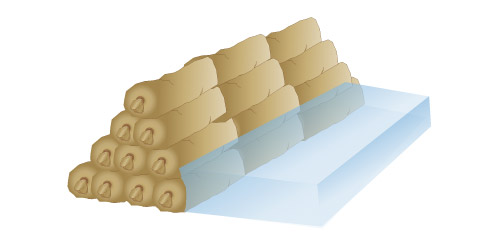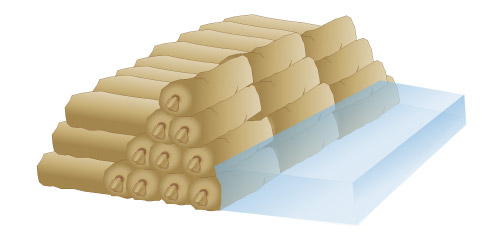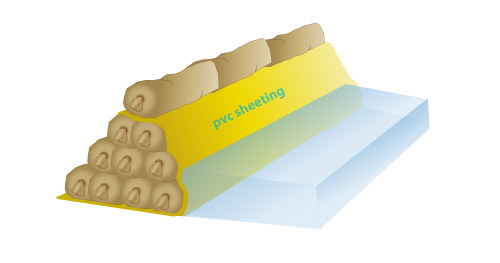Sandbag Walls

Building a more substantial wall
Ideally if you need to build a substantial wall seek professional advice from a qualified engineer. However, should time be short these tips will help you build an effective flood defence.
- Clear the area of any debris before laying sandbags, this will help to reduce gaps that may allow water through
- Sandbags should be laid with seams and bag mouths facing inwards as this is where water will enter the sandbag most easily.
- Two effective ways of laying sandbags are into "header" (figure 1) and "stretcher" (figure 2) courses. Headers should be used on the first, third and fifth courses with stretches second, fourth and sixth.
- Sandbags should be shaped into rectangles before laying them and it is recommended to have all the necks facing in the same direction.
- If the sandbags are expected to be in place for a long time pvc sheeting should be used on the wet side of the wall. Lay down the pvc sheeting as shown in figure 3 and when the wall is the desired height pull the sheet over the top of the wall and secure with a layer of sandbags.
- If you have time sandbags should be compacted after being laid. This can be done effectively using a vibrating plate to reduce gaps.
Figure 1 | Header Method

Figure 2 | Stretch Method

Figure 3 | pvc sheeting

Pyramid placement (for larger structures)
If you need a structure that is more than three layers high we recommend laying sandbags pyramid style, the structure should be three times wider than it is high to remain stable. Use the header and stretcher method on each layer for maximum strength.





